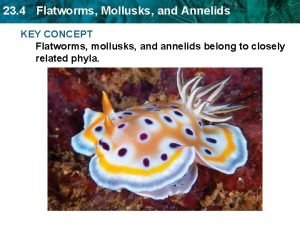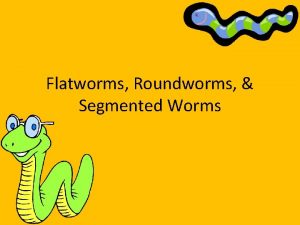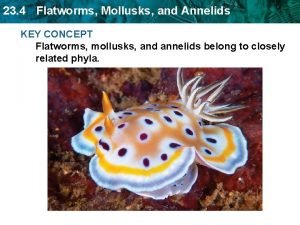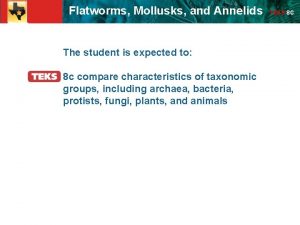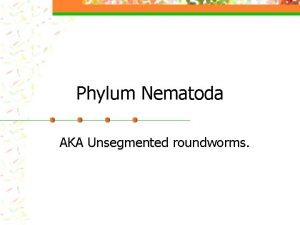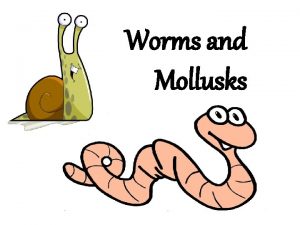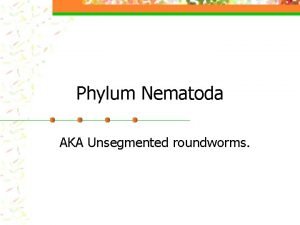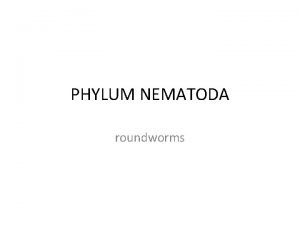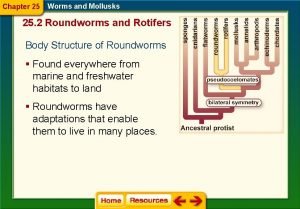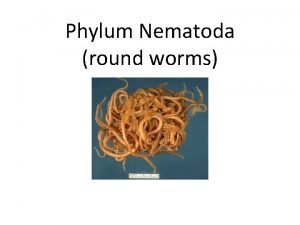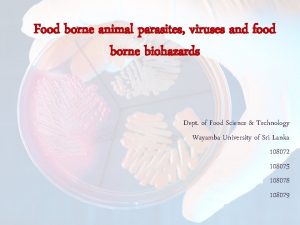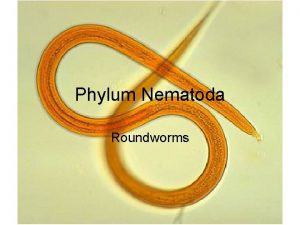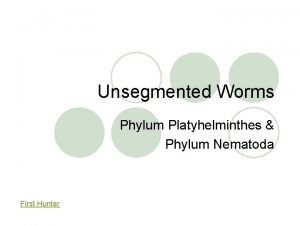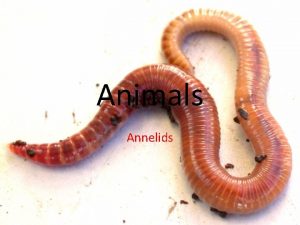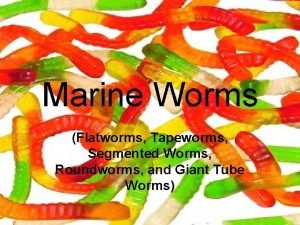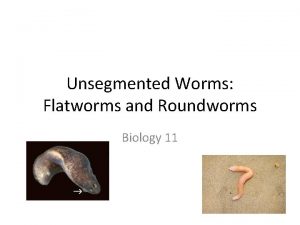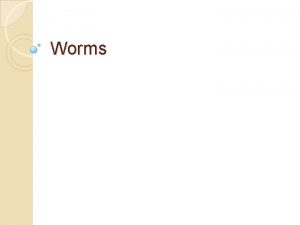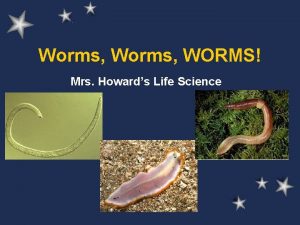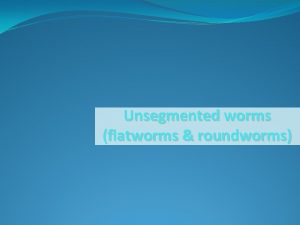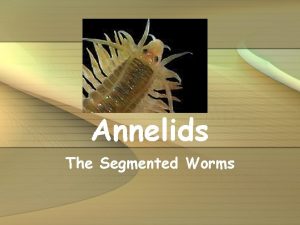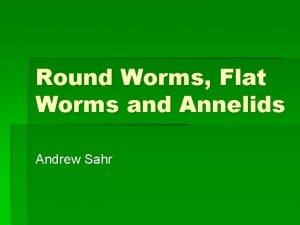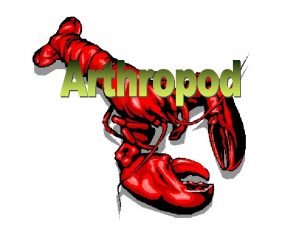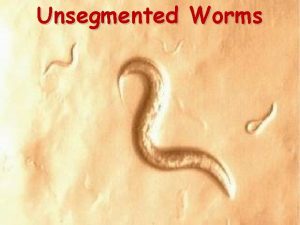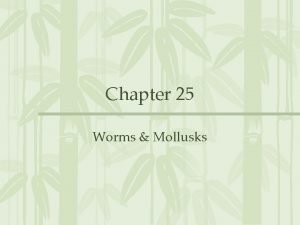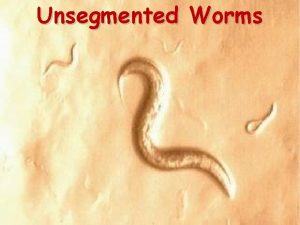Worms Annelids Flatworms Roundworms Annelids Flatworms Flatworms are














- Slides: 14

Worms & Annelids Flatworms, Roundworms, Annelids

Flatworms • Flatworms are soft, flattened worms that have tissues and internal organs. They are the SIMPLEST animals to have three embryonic germ layers, bilateral symmetry and cephalization. • AKA Acoelomates(w/o a coelom) • Coelom- a fluid body cavity that is lined with tissue derived from mesoderm(the middle germ layer that develops into muscle and bone and cartilage and blood and connective tissue)

Flatworms • • • Some are Hermaphrodites Both Sexual & Asexual or fusion They twist and turn Might be carnivores Feed through the mouth No digestion system &circulatory system

Flatworms • Turbelllarians- free-living flatworms. Most live in Marine or Fresh water. • Flukes- parasitic flatworms. Mostly infects internal organs of host. • Tapeworms- long, flat parasitic that are adapted to life inside the intestines of host.

Flatworms

Roundworms • Slender, unsegmented with tapering ends. • Up to a meter in length • Most are free-living, live in soil, salt, flats, aquatic sediments and water in polar regions to the tropics. • Others are parasitic and live in host in both plant and animal

Roundworms • Have a cavity between the endoderm and mesoderm called Pseudocoelom(false coelom) • Their digestive is system is called “tube with in a tube” (Coelom) Inner tube is the digestion tract and outer tube is the body wall • Has both a mouth and an anus • Can detect chemicals given off by prey or host • Reproduce Sexually

Roundworms • Free-living roundworms have the most COMPLEX body systems • Most free-living round worms are predators • Have a nervous system • Can exchange gases and excrete metabolic waste through body walls • Swim by making the same movement of snakes or thrashing around

Roundworms • Trichinosis-Causing Worms- reproduce quickly leaving fertilize eggs burrow into the intestinal wall and causes terrible pain • Filarial Worms- thread like worms that live in the blood and lymph of mammals and birds • Ascarid Worms- parasitic roundworms that absorbs the digested food from the host’s small intestine • Hookworms- travel through blood of the lungs and down the intestines and suck the host’s blood

Roundworms

Annelids • Derives from the latin word annellus which means little rings • Segmented, septa(segments) • Both digestive system and digestive tract • Has a nervous system • Has 2 muscles for movement, Longitudinal (makes worm shorter and fatter), Circular (makes worm thinner and longer) • Produce sexually unless they’re hermaphrodite

Annelids • Oligochaetes- typically have streamed lined bodies and relatively few setae compared to polychaetes and live either in soil in water. • Leeches- typically external parasites that suck blood and body fluids of their host. • Polychaetes- marine annelids that have paired, paddle like, appendages tipped with setae.

Annelids

QUIZ ANSWERS
 Section 4 flatworms mollusks and annelids
Section 4 flatworms mollusks and annelids Flatworm roundworm and segmented worm
Flatworm roundworm and segmented worm Mikael ferm
Mikael ferm Section 4 flatworms mollusks and annelids
Section 4 flatworms mollusks and annelids Section 4 flatworms mollusks and annelids
Section 4 flatworms mollusks and annelids Unsegmented roundworms
Unsegmented roundworms Flatworm labeled
Flatworm labeled Characteristics of worms
Characteristics of worms Unsegmented roundworms
Unsegmented roundworms Nematoda symmetry
Nematoda symmetry Chapter 25 section 3 mollusks
Chapter 25 section 3 mollusks Phylum
Phylum Trmatoda
Trmatoda Parasitism phylum
Parasitism phylum Unsegmented roundworms
Unsegmented roundworms
